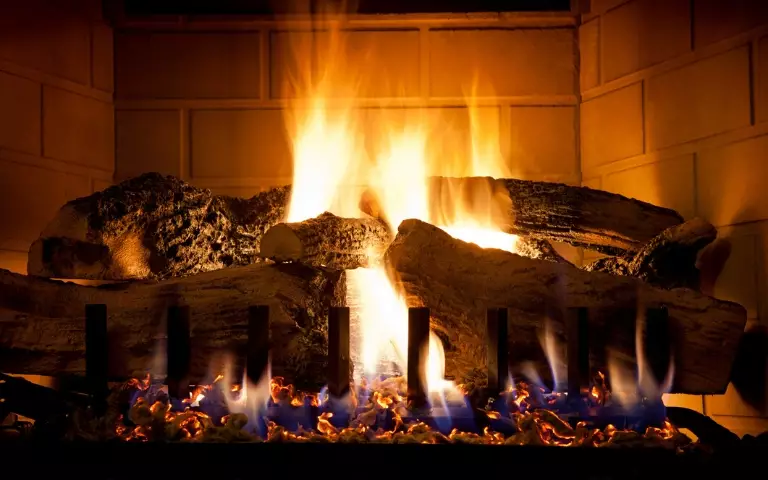
Cold weather season is upon us and so is the consistent use of your gas fireplace.
A gas log fireplace offers a safe, energy-efficient, and easy to maintain way to replicate a traditional wood fireplace. It is important to clean a gas fireplace monthly even when it is not being used heavily. This will prevent dust and dirt from harming the system and allows you to inspect for damage – potentially catching something that could, later down the road, become an issue.
Here is a step-by-step guide on how to clean and inspect your gas logs:
Step 1: Make Sure Gas is Turned Off
Before you start to do ANYTHING, turn off the gas! The gas valve, which is typically located on the wall next to the fireplace, should be turned off completely. Double-check that the pilot light is completely out and wait a few minutes before beginning to work. This allows any remaining gas to leave the piping safely. If the fireplace was used recently – make sure all components are completely cool before you begin to clean.
Step 2: Disassemble the Fireplace
This step will depend on the design of your fireplace. Please always refer to your user manual. Carefully disassemble the logs and remove the burner unit. If you are able, take them outside to clean so you are not spreading more dust and soot in your living spaces. It is important you put everything back where you found it. Tip: Snap pictures on your phone as you remove each object.
Step 3: Inspect and Brush
Use a hand broom (or soft paintbrush) to carefully brush away dust and dirt on each log. While you are brushing the soot and dust away, this is a great time to inspect for any cracks and damages, excessive burn marks or any holes. Make sure you also brush away debris from the burner unit and inspect each vent hole for any build-up and dust that could clog the flow of gas.
Step 4: Vacuum Away Dust and Cobwebs
Whether you have rocks, glass, or stones, they will accumulate dust … and plenty of it. Use a vacuum with a hose attachment to clean around every rock. If your rocks or stones are small, use nylon as a net to the end of the hose nozzle sealed with a rubber band. This way the dust gets sucked through but not the rocks. Inspect the corners of the fireplace to see if any dust, cobwebs, or any insects that may be trapped. Don’t forget to wipe down the pilot light and gas line components.
Step 5: Polish Glass and Metal
Most gas fireplaces have glass doors that become covered in particulates during the combustion process. Regular cleaning the glass doors will help prevent the glass from becoming permanently cloudy. Never use glass or oven cleaner. These products are too harsh, instead, go to your local hardware store where you can find a fireplace glass cleaner. Spray the solution and allow it to sit for a few minutes before using a soft cloth to remove debris and film.
If you have a mesh screen or curtain – use the vacuum upholstery brush to clean and remove dust. For both glass and metal screens, make sure to wipe down edges with a damp cloth to remove any dust. While you are doing this, make sure to inspect the rubber gaskets for any cracks or deterioration.
Step 6: Wipe Down Mantle and Hearth
Since you are already on a cleaning spree, this is a great time to clean any dust or soot from your mantle and hearth. It is recommended that you use a soft cloth so you don’t scratch your walls or scrape any paint.
Step 7: Reassemble the Gas Fireplace
Using the photos that you have taken before, reassemble the burner and logs as replace the outer glass or screens. After this step, it is safe to turn the gas valve back on.
Step 8: Check Your Exteriors
If your gas fireplace is vented to the outside, make sure to check the outside vent monthly for any blockages from leaves and branches.
Always refer to your user manual for each step. If you should run into any issues or any questions along the process, contact Carolina Comfort Air. An HVAC professional is eager to answer any questions you may have about cleaning gas logs or your home’s heating and cooling system.
